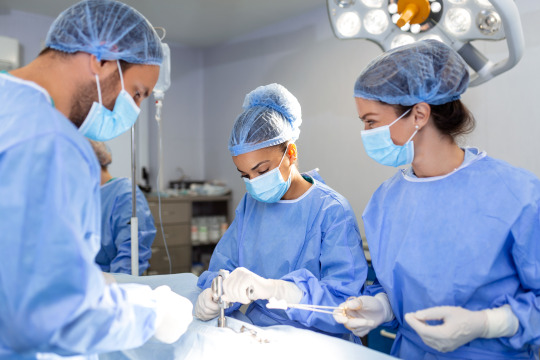#painless normal delivery in Indra Nagar
Text
Laparoscopic Surgery: Purpose, Procedure, and Benefits

laparoscopic surgery in Indra Nagar
Laparoscopic surgery, often known as diagnostic laparoscopy, is a low-risk, minimally invasive treatment that requires a number of tiny incisions. Examining abdominal organs is done using this surgical and diagnostic approach.
Laparoscopes are the instruments used in the surgery, hence the name. This medical device has a tiny video camera with a light on it. Small incisions are made by the surgeon before the laparoscope is inserted into the body. The surgeon can assess the display to determine what's wrong.
Without a laparoscope, the surgeon would need to create a much bigger incision to view the interior organs. Open procedures are always preferred because they involve fewer cuts.
The identification and diagnosis of abdominal or pelvic pain is done more frequently via laparoscopy. When other minimally invasive techniques fail to aid in the diagnosis, it is an option that is taken into account. Abdominal issues can frequently be diagnosed with the aid of imaging techniques like:
With the CT scan procedure, cross-sectional images of the body are captured using specialised X-rays.
Using high-frequency sound waves, the method of ultrasound creates images of the body.
Radio waves and magnets are used in an MRI scan to create the images.
Laparoscopic diagnosis is utilised when these tests are unable to offer adequate insight or information to make a diagnosis. A tissue sample or biopsy can be obtained by laparoscopy.
Small intestine
liver
gallbladder
appendix
pancreatic
colon
a section of the big intestine
stomach spleen
female genitalia in the pelvis
A laparoscope allows the doctor to see the area where a test is performed, which includes:
mass or tumour growing in the abdomen
Abdominal cavity liquid
An individual cancer's level of development
What a specific treatment's effectiveness is
Surgery can be used to treat your symptoms if a diagnosis is made.
Procedure
Although it can be used for performing surgical treatments as well, laparoscopy is mostly a diagnostic procedure. The surgeon uses a small tool with a camera and light while doing the procedure. The tool, known as a laparoscope, is employed to visualise the illness or injury to the relevant organs.
Small abdominal incisions are made as part of the process before the laparoscope is placed into the body. In order to obtain clearer views of the pelvic and abdominal organs, a catheter is then utilised.
Surgeons may occasionally support a surgery with additional surgical equipment in particular circumstances. The locations of the incision can be used to insert such equipment. Approximately four tiny cuts will be made in the abdomen region of the patient during the procedure.
Additionally, the surgeon may employ a uterine manipulator, inserting it into the vagina, uterus, and cervix to assist in the movement of the pelvic organs. As a result, they will be able to observe several pelvic anatomical features.
The medical practitioner must take away all equipment and the majority of the CO2 from the abdomen after the surgery. After the cuts have been stitched closed, bandages are placed over the affected area. The use of anaesthesia may cause the patient to feel queasy or exhausted.
The patient is often released the same day as the operation, in most situations. Hospitalisation may be necessary for some patients, though, in order to enable full recovery. A lengthier recuperation period may be needed, for instance, after a laparoscopic hysterectomy, which removes the uterus.
Benefits
A laparoscopy has many advantages over typical surgical procedures, mainly because it necessitates fewer incisions.
Lessening of the scars
Patient leaves the hospital sooner after being discharged
There is less discomfort involved throughout the healing process, and the scars heal faster.
It will take less time for the patient to resume normal activities.
Comparatively little internal scarring occurs.
When using traditional techniques, the recuperation period is frequently lengthy. Laparoscopy patients also pay less for their stay because their hospital stays are shorter.
#gynae surgeon in Indira Nagar#obstetrics and gynecology in Indira Nagar#obstetrician gynecologist at Indra Nagar#family planning centre at Indira Nagar#painless normal delivery in Indra Nagar#pregnancy care centre in Indra Nagar#laproscopic surgery in Indra Nagar#best gynecologist in nashik#laproscopic surgery in cidco#laproscopic surgery in pathardi phata
1 note
·
View note